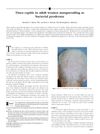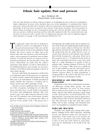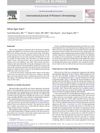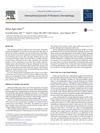Clinical Diagnosis of Common Scalp Disorders
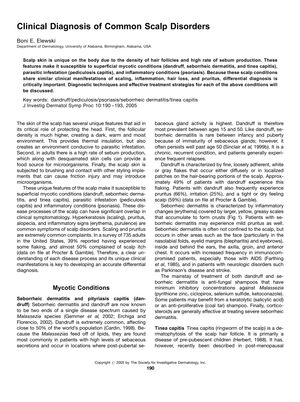
TLDR The document concludes that accurate diagnosis is crucial for effectively treating common scalp disorders, which often have similar symptoms.
The 2005 document outlines the characteristics and treatment of common scalp disorders, highlighting the importance of accurate diagnosis due to overlapping symptoms such as scaling, inflammation, hair loss, and itching. Dandruff, affecting nearly 50% of the population, and seborrheic dermatitis are linked to Malassezia species and treated with antifungal shampoos. Tinea capitis, a fungal infection, mainly affects children and sometimes post-menopausal women, and is treated with griseofulvin and other antifungals. Pediculosis capitis, a lice infestation, has increased among school-aged children and is treated with topical insecticides. Psoriasis, a chronic disease affecting 2% of the population, involves scalp in half of the cases and is treated with tar shampoos, salicylic acid, corticosteroids, or systemic therapy. A table in the document compares these disorders on factors such as age of onset, symptoms, and treatment response, emphasizing the need for differential diagnosis to manage these conditions effectively.
